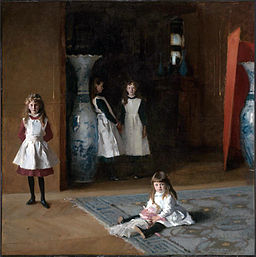Every now and then I hear about a conflict that wasn’t mediated but should have been. Mediation would have saved the participants time, money and aggravation. In this case, you do not even have to accept my judgement that the conflict should have been mediated. Three Lord Justices of the England and Wales Court of Appeal stated that the dispute could have been resolved thorough mediation, without recourse to the legal system, for a fraction of the £140,134 (roughly $224,400 Cdn) that the disputants eventually spent.
The setting is “Eaton Mansions,” a tony block of flats in London, England. The suit was brought by Mr. and Mrs. Faidi, who own and occupied Flat 6. Sometime before 2006, the defendant, Elliot Corporation, acquired the lease for Flat 8, directly above the Faidis. The new owners applied for and were given permission to carry out renovations, including removing the radiators, tearing up the wall-to-wall carpeting, putting a new radiant heating system in the floor, and installing new hardwood flooring. They went through all of the proper procedures and got permission before doing the renovations. In August 2010 the flat was leased to a couple with three daughters, aged 14, 12, and 5.
Sometime after the family moved in upstairs the Faidis brought a suit against the Elliot Corporation, charging that the day-to-day activities of their new neighbours caused noise and disturbed them. They would be spared this disturbance, the claim argued, if the floors were covered by wall-to-wall carpets. Indeed, each lease specifies that the floors (with the exception of the kitchen and bathroom) should be covered with carpet and underlay. The defendant argued that when the renovation plans were approved the regulation about wall-to-wall carpeting became moot. What would be the point of installing new hardwood floors, only to have them obscured by carpets? Besides, the new heating system would not work effectively if the floors were carpeted.
Judge Freeland, who heard the original case, dismissed the Faidis’ claim. He relied on expert testimony that the noise insulation installed when the new floors were constructed exceeded the minimum required by the building code. The judge even went to the trouble of visiting Eaton Mansions to see the floor for himself. The three judges who heard the appeal (Lord Justices Ward, Lloyd, and Jackson) concurred, finding that it would be “futile and absurd” to go to the expense of laying hardwood floors if they were destined to be covered up by carpets. (You can read the full text of their judgment here.)
Litigation is adversarial by nature; outcomes are usually “all or nothing.” Robert Pearce, the lawyer who presented the arguments for the Faidis’ appeal, proposed that a “moderate” amount of carpeting in flat 8 (say, in high traffic areas) would have absorbed some of the noise yet still allowed the residents to enjoy their new floors and benefit from the heating system. The justices agreed that this would have been a sensible solution; however it was not one that the courts could impose. The judges stressed that this outcome (strategically placed carpets) could easily have been achieved through mediation. Justice Ward said it best: “Not all neighbours are from hell. They may simply occupy the land of bigotry. There may be no escape from hell but the boundaries of bigotry can with tact be changed by the cutting edge of reasonableness skillfully applied by a trained mediator. Give and take is often better than all or nothing.”
Ironically, the Faidis no longer live in flat 6; their son lives there now. And the family upstairs has also moved on.
Reproduced above: The Daughters of Edward Darley Boit by John Singer Sargent (1882), currently in the Museum of Fine Arts, Boston. Image from Wikimedia Commons.

No comments:
Post a Comment